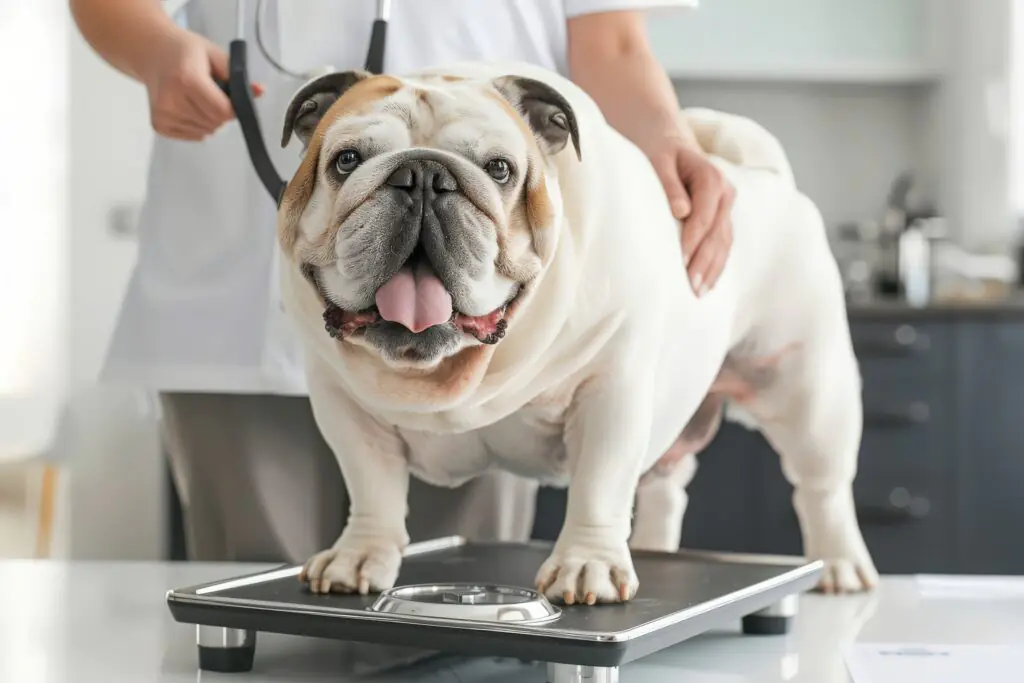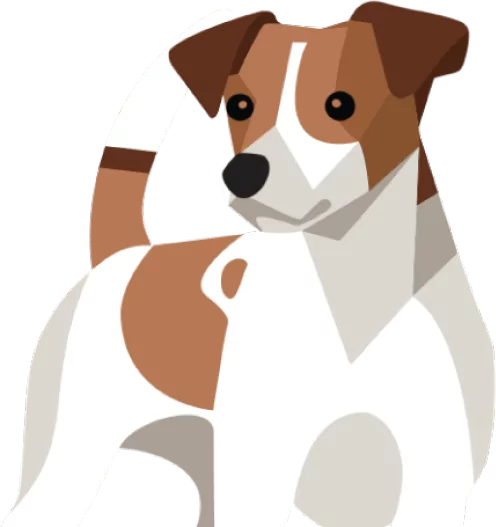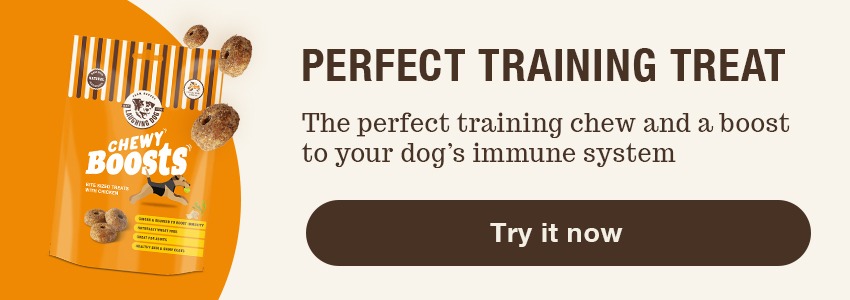
If your vet has identified that your dog may be obese, it can be a stressful time for pet owners, and finding the right information can feel overwhelming. We have put together our top tips to help guide you through this process.
The main factors to why dogs become obese are overfeeding or lack of exercise. All dog foods and treats come with feeding guidelines as a legal requirement. They are a general guide to not overfeed your dog but are open to interpretation depending on the level of activity of your four-legged friend.
Typically, dog feeding guidelines run in scales, and this is where they can be open to interpretation. You could be advised to feed them between 200 or 250g for example, but these measurements will depend on your dog’s level of activity, their age, breed and if you are supplying them with any other food to complement the food from the feeding guidelines.
Obese dog scale
An obese dog is classed as such when it has over 35% body fat. The main way of identifying this is feeling for your dog’s ribs. Try stroking your dog and if their ribs are difficult to feel under a layer of fat then your dog is likely to be overweight, or even obese.
An overweight dog has typically 25% to 34% body fat and their ribs would be identifiable but still difficult to feel. The ideal weight for a dog would suggest that you can feel their ribs but that you cannot see them through their structure. As all dogs have different body shapes this is the best way of knowing if your dog is overweight.
Some dogs naturally have a more barrel or rounded shape to them, but it is not always easy to judge based just on the shape or size of their underbelly. The main areas where dogs deposit fat are the neck, limbs and backbone, so these are the key areas to check.
If you are at all unsure of how to check your dog, simply call your local vets who will be happy to advise and guide you.
Consequences of obesity in dogs
Much like humans, obesity in dogs can be a health concern. An obese dog is likely to be subject to diabetes, cancer, joint issues, heart disease and hypertension.
Put in layman’s terms, any issue which would affect a human for being overweight is also likely to affect your dog. It can also affect the lifespan of a dog – in some cases reducing this by up to 2 years, compared to a leaner dog.
How to help my obese dog lose weight
If you are aware that your dog is obese, it is important to act quickly. Much like with humans, diet management and exercise are the key attributes to helping your dog lose weight. Firstly, start to reduce their portion size, but do this gradually so it is less of a shock to their systems.
Also be mindful of how much additional food they are receiving on top of their regular meal-times. This can include rewards, treats and leftovers from the family meal. Some paw parents find it easier to control what their dog is eating by having them in a separate room at family mealtimes. It is very easy to offer up any leftovers to your dog so that they do not go to waste, but this can also add to the issue of dog obesity. If you are in the habit of rewarding your dog with treats for good behaviour don’t stop, but you can seek more healthy versions of treats. Firstly, you could switch the dog treat entirely and opt for healthy options like carrots, banana, or apple slices.
You can also make more mindful choices for what treats you are feeding your dog; for example, looking for limited ingredient dog treats much like the Chewy Boost from Laughing Dog or the plant powered Strawberry & Peanut Butter dog treats.
On top of a limited diet for your dog, you can also introduce the additional activity to help them shed a few pounds. If you are stuck for time, which is quite often the limitation to dogs’ activity, you could try and introduce more time in the garden. Throwing a ball a few times and getting them to run up and down is great – any sort of extra activity even just for 5 to 10 minutes will help.
You can also introduce regular weigh-ins; if feasible, try to weigh your dog every 2 to 3 weeks during the stages of helping them to lose weight. It is important to do this on a regular basis when trying to limit their diet and increase their activity so that you do not make them lose weight drastically. Any changes to a dog’s diet or activity should be done over a gradual period and you should not see a huge change on the scales week by week – this should also be a gradual drop.
For activity and dietary guidance or if you have any concerns about your dog’s weight, please see your vet.


